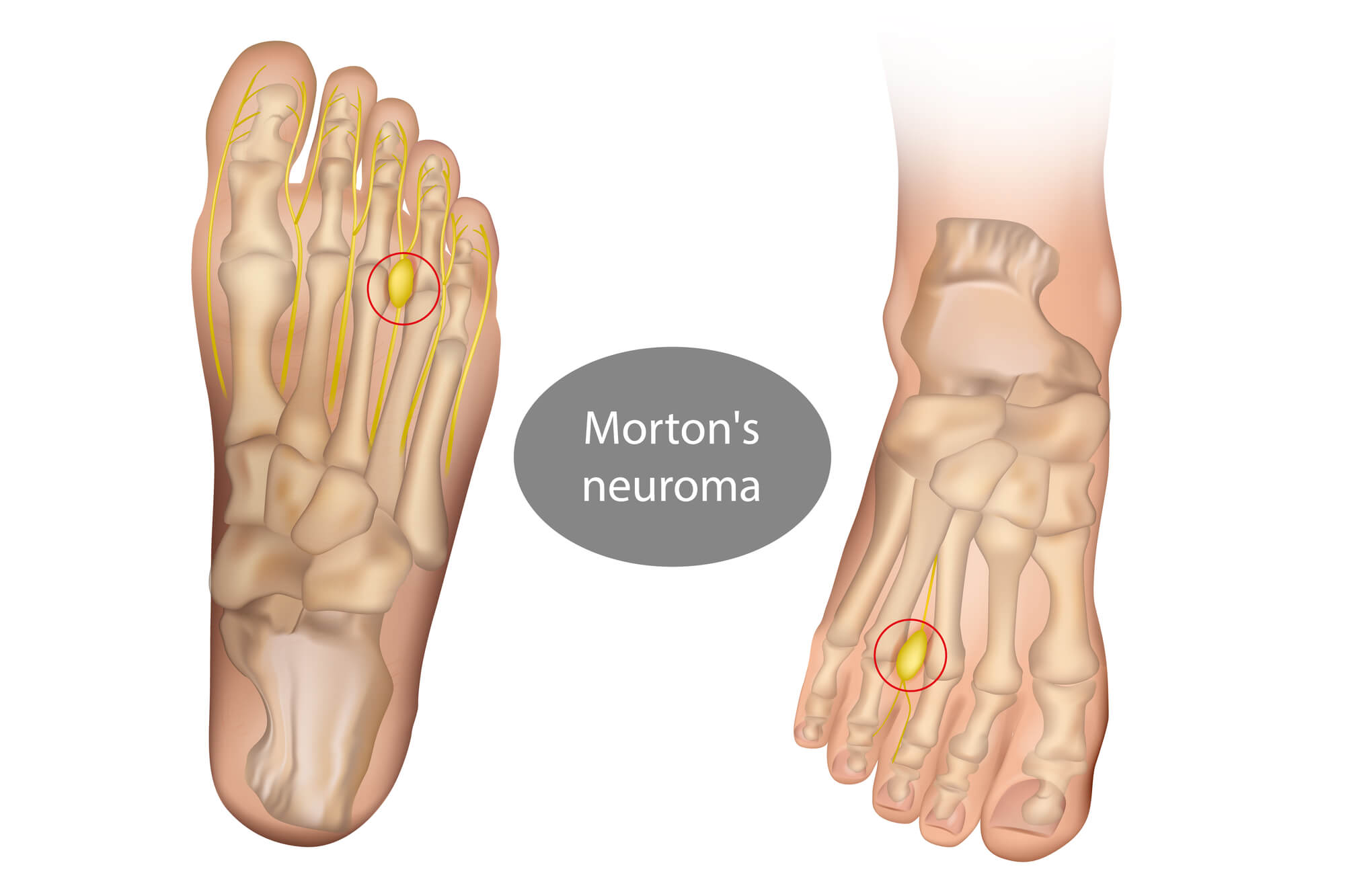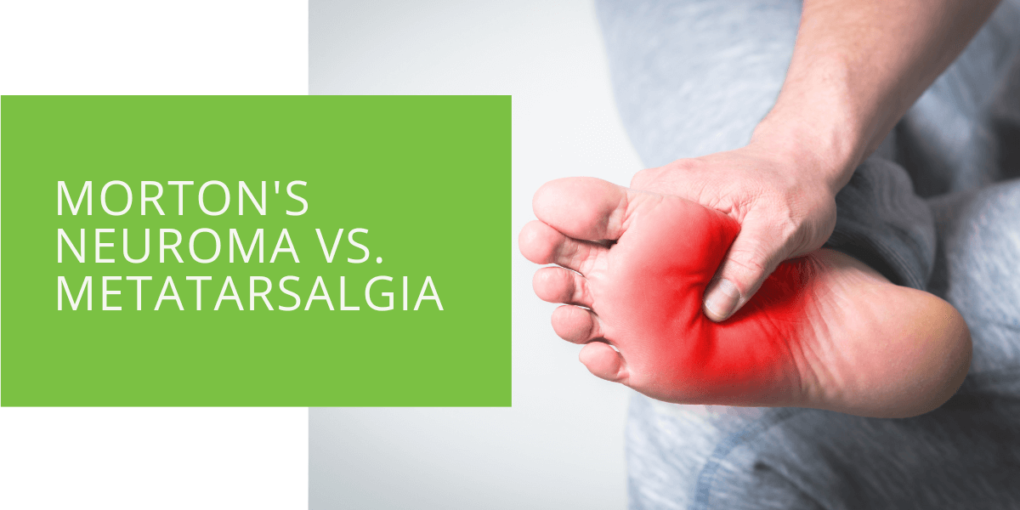Morton’s Neuroma vs. Metatarsalgia
Morton's neuroma and Metatarsalgia are common foot conditions that often cause pain and discomfort. While they may have similar symptoms, they are quite different in their causes and treatments. This article will explore the differences between Morton's neuroma and Metatarsalgia, how they are diagnosed, and the various treatment options available. We'll also discuss ways to prevent these conditions from developing. If you're experiencing foot pain, you must visit a podiatrist to get a proper diagnosis and treatment plan.
What is Morton's Neuroma?
Morton's neuroma, also known as intermetatarsal neuroma, is a thickening of the tissue around a nerve in the foot, usually between the third and fourth toes. This thickening can cause the nerve to pinched, leading to pain and discomfort.
Morton's neuroma is often caused by wearing tight or ill-fitting shoes, such as high heels or shoes with a narrow toe box. It can also be caused by activities that put repetitive stress on the feet, such as running or dancing. People with a high arch or flat feet are also more prone to developing Morton's neuroma.
Symptoms of Morton's neuroma may include a burning sensation in the ball of the foot, numbness in the toes, and pain that radiates to the toes. The pain may be more severe when walking or standing for long periods.

What is Metatarsalgia?
Metatarsalgia is a condition that causes pain and inflammation in the ball of the foot, usually in the area around the metatarsal bones (the long bones in the middle of the foot). It can be caused by various factors, including wearing poorly fitting shoes, being overweight, and participating in high-impact activities such as running or jumping.
Symptoms of Metatarsalgia may include a sharp or shooting pain in the ball of the foot, swelling, and difficulty walking or standing for long periods. The pain may worsen when the foot bears weight, such as when walking or running.

How are Morton's Neuroma and Metatarsalgia Diagnosed?
If you are experiencing foot pain, you must visit a podiatrist for a proper diagnosis and treatment plan. A podiatrist is a medical professional specializing in diagnosing and treating foot and ankle conditions.
During a visit to the podiatrist, they will conduct a physical examination of your foot and review your medical history. They may also order imaging tests, such as x-rays or an MRI, to get a better look at the bones and tissues in your foot. These tests can help the podiatrist determine the cause of your foot pain and rule out other potential conditions.
Treatment Options for Morton's Neuroma and Metatarsalgia
Treatment for Morton's neuroma and Metatarsalgia will depend on the severity of the condition and the underlying cause. Non-surgical options may include rest, ice, and physical therapy to help reduce inflammation and pain. The podiatrist may also recommend changes to your footwear, such as wearing shoes with a wider toe box or inserts to provide cushioning and support.
In more severe cases, surgical options may be necessary. This may include nerve decompression for Morton's neuroma, which involves removing the thickened tissue around the nerve to reduce pressure and pain. For Metatarsalgia, a surgical option may be joint fusion, which involves fusing the metatarsal bones to alleviate pain and improve stability.

Preventing Morton's Neuroma and Metatarsalgia
You can take several steps to prevent the development of Morton's neuroma and Metatarsalgia. Here are a few tips:
- Wear proper footwear: Choose shoes with a wide toe box and good arch support to help reduce pressure on the feet. Avoid high heels and shoes that are too tight.
- Maintain a healthy weight: Being overweight puts additional strain on the feet, increasing your risk of developing foot conditions such as Morton's neuroma and Metatarsalgia.
- Stretch before physical activity: Stretching before participating in high-impact activities can help reduce the risk of a foot injury.
- Avoid overuse: If you participate in activities that put repetitive stress on your feet, take breaks and switch things up to avoid overuse injuries.

What Is the Difference Between Morton's Neuroma and Metatarsalgia?
The main difference between Morton's Neuroma and Metatarsalgia is the location of the pain and inflammation. Morton's neuroma affects the tissue around a nerve in the foot, usually between the third and fourth toes. This can cause a burning sensation, numbness, and radiating pain in the toes. Metatarsalgia, on the other hand, affects the ball of the foot, usually around the metatarsal bones. This can cause sharp or shooting pain, swelling, and difficulty walking or standing for long periods.
Another key difference between these two conditions is the cause. Morton's neuroma is often caused by wearing tight or ill-fitting shoes, participating in high-impact activities, or having a high arch or flat feet. Metatarsalgia, on the other hand, can be caused by various factors, including wearing poorly fitting shoes, being overweight, and participating in high-impact activities.
Finally, the treatment options for these two conditions may differ. Non-surgical options for Morton's neuroma may include rest, ice, and physical therapy, while surgical options may include nerve decompression. Treatment options for Metatarsalgia may include joint fusion surgery or non-surgical options such as rest, ice, and physical therapy. It's important to visit a podiatrist for a proper diagnosis and treatment plan.
Conclusion
Morton's neuroma and Metatarsalgia are common foot conditions that can cause pain and discomfort. While they may have similar symptoms, they have different causes and require different treatment approaches. If you are experiencing foot pain, you must visit a podiatrist for a proper diagnosis and treatment plan. Following the tips outlined above and taking care of your feet can help prevent these conditions from developing.

